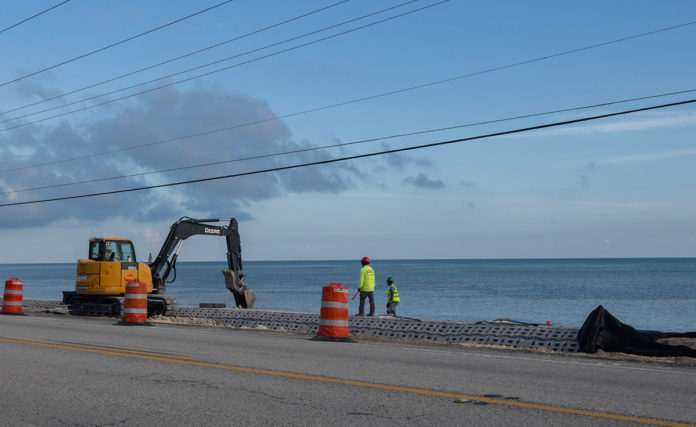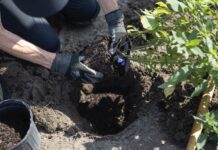
A study by the U.S. Army Corps of Engineers nears completion as various governments confront coastal storm and flood vulnerability in the Florida Keys.
With recommendations for shoreline stabilization along U.S. 1, voluntary home raising and structure floodproofing, fortifying the Keys from future storms and flooding is estimated at $2.6 billion.
Monroe County Board of County Commissioners recently gave the go-ahead to sign a letter of support to accept the $3 million, federally-funded feasibility study, which started in 2018. A final version of the study was presented to government officials from the county, and more recently, Islamorada village council members. Rachel Haug, senior planner for the USACE, joined the village council’s April 8 meeting via Zoom to outline recent notable changes, costs and a timeline for the project.
One of the bigger changes, as seen in the final plan, surrounds mandatory structure acquisition. While included in earlier versions, Haug said the measure isn’t in the final plan.
“It was a sticking point for folks,” she said.
Nearly 4,700 homes in the Keys are recommended for elevation, while a little over 1,000 commercial structures and 53 critical infrastructure buildings were identified for floodproofing.
In total, 208 Islamorada homes are recommended for raising and 90 structures identified for floodproofing. Elevating homes in the village is estimated at $102 million, while floodproofing is expected to cost around $30 million. Critical infrastructure projects are around $4 million.
Countywide, elevating Keys homes is expected to cost more than $2 billion, with floodproofing projects estimated at more than $400 million.
The plan identifies 2,028 Key West homes in need of elevation, 400 structures for floodproofing and seven critical infrastructure floodproofing projects. Structure elevation costs are around $900 million, while floodproofing of structures is estimated at $5.5 million. Critical infrastructure floodproofing is around $2.7 million for the Key West projects.
Haug said the federal government is expected to fund 65% of project costs, and that equates to $1.7 billion. The remaining $893 million will need to be funded by the state, county, local municipalities and other non-federal sources.
With Congressional authorization of the project anticipated within the Water Resources Development Act of 2022, Haug said the plan is to garner funding to start pre-construction and engineering design for U.S. 1 shoreline revetment.
By 2025, a first construction contract would be awarded for building. Projects identified within the study will be phased through 10 years, with completion expected in 2035.
“Obviously for a project this big, we will need to phase that construction,” Haug said. “We’re not just going to elevate thousands of homes and flood-proof in a year.”
Councilman David Webb asked if there are any shoreline stabilizations planned along U.S. 1 in the Islamorada confines. While Haug said there are no plans within the project to conduct revetment work in the village, she acknowledged the Florida Department of Transportation’s project to elevate the road near Sea Oats Beach. It’s expected to start in June 2022. Costs are around $12.4 million for the raising of shoulders and road from MM 73.9 to MM 76 and improved drainage, among other work.
In addition, FDOT is working to repair the shoreline along Sea Oats Beach as part of a larger $6 million, Hurricane Irma repair project up and down the Keys. Work at Sea Oats Beach started around August.
“We don’t have recommendations for Islamorada at this point for U.S. 1, because FDOT said they’re going to be doing improvements there,” Haug said.

























